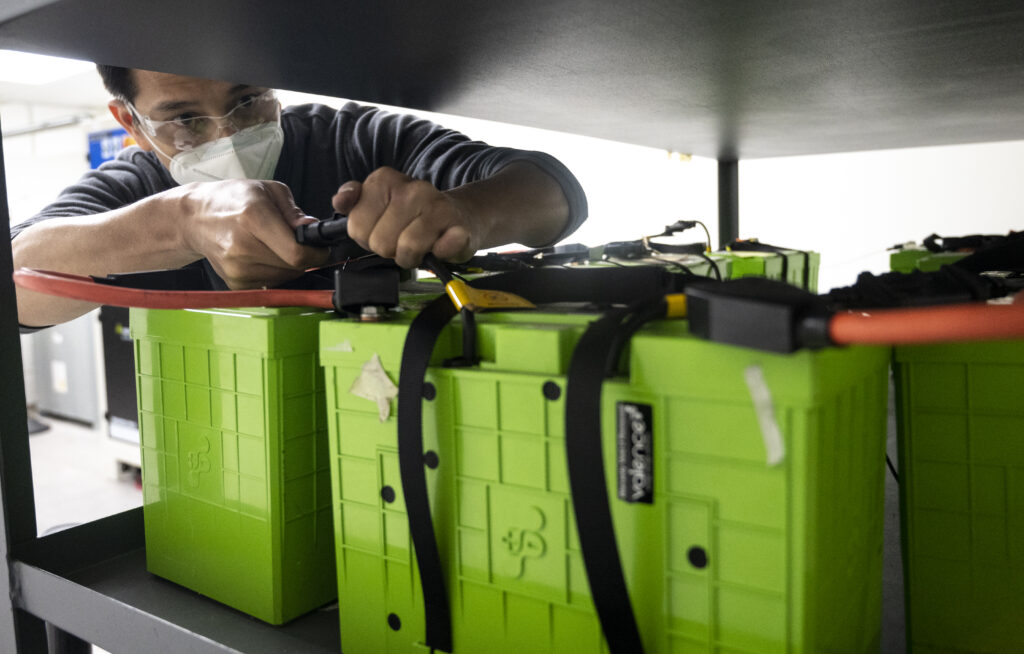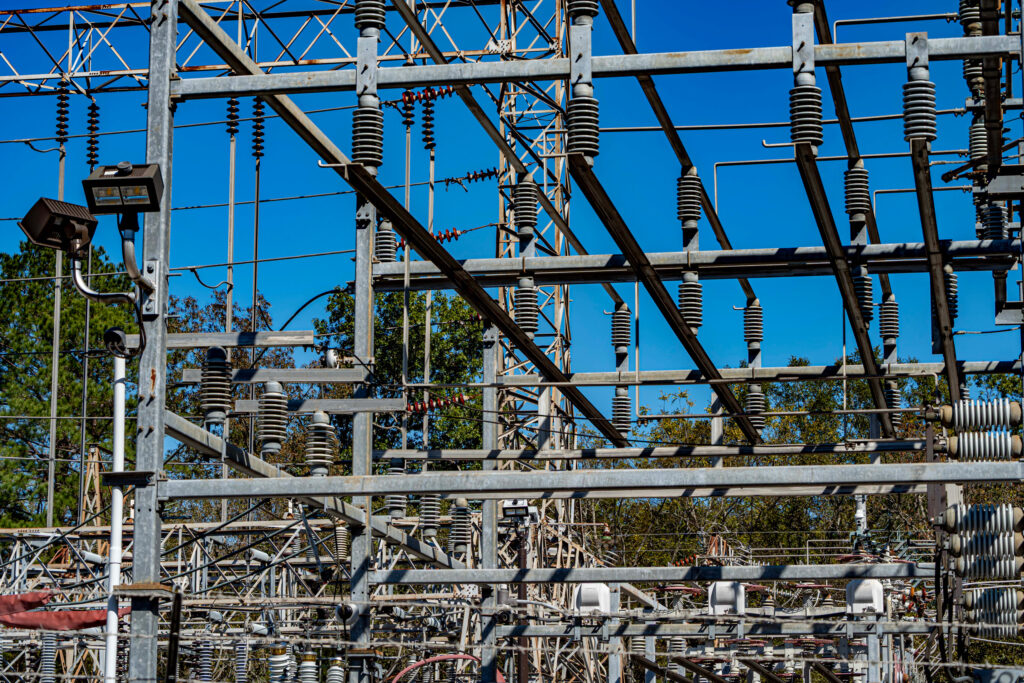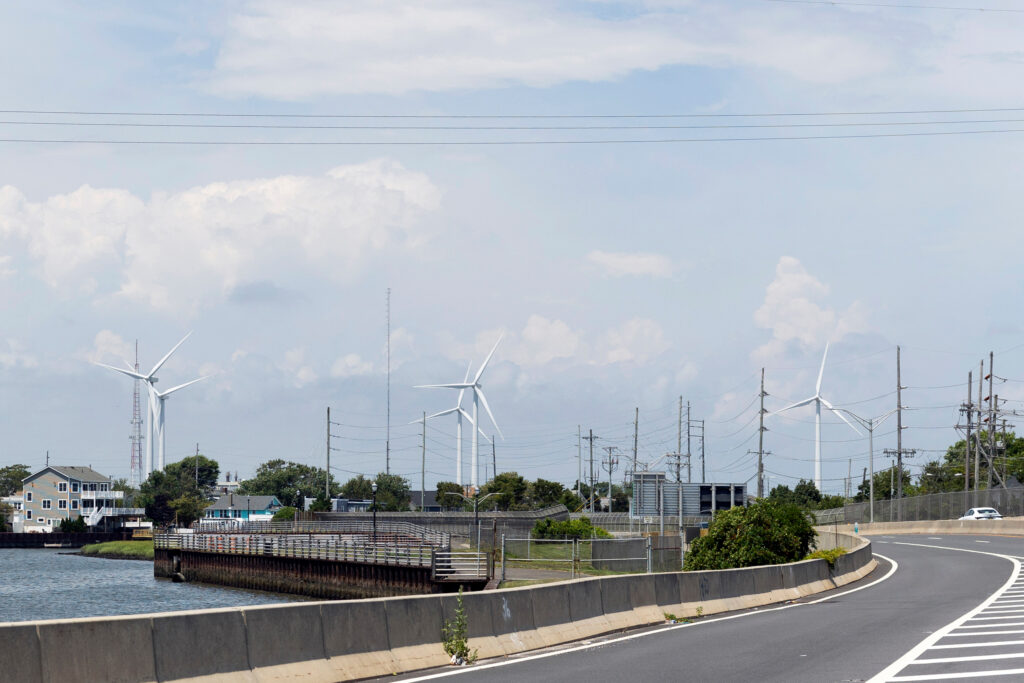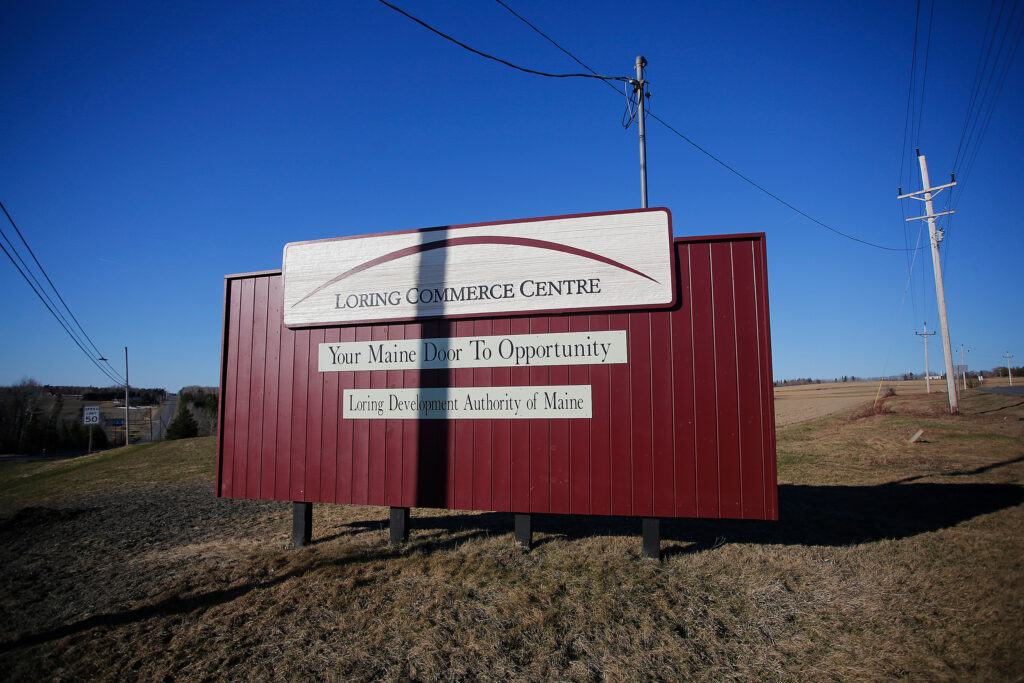Just days after announcing sweeping cuts to clean energy programs across the country, the Trump administration appears to be upping the ante—potentially clawing back billions more in federal funding.
The U.S. Department of Energy initially announced the termination of 321 financial awards on Oct. 2, which the agency said totaled $7.56 billion in taxpayer savings. An additional 327 awards appear on a new, leaked list of projects targeted by the DOE for termination, widely circulated this week among lobbyists, members of Congress and news outlets including Inside Climate News.
The cancellation of all these projects would gut the big federal push in clean energy made under the Biden administration, and experts warned of wide-ranging impacts to jobs, electricity grids stressed by rising demand and the environment. But the tides of economics—in particular the plummeting cost of wind and solar power—mean that renewable energy will likely continue to gain ground. Indeed, some recipients of the targeted projects have vowed to continue with their work, though scale and speed may suffer.
What’s more, an ICN analysis of federal spending data, based on a spreadsheet derived from the leaked document created by the Clean Air Task Force, indicates that the DOE’s estimate of taxpayer savings is overstated. The original 321 canceled awards include many that had already passed their stated end date—two dozen of them before Trump’s inauguration.
Considering only those awards that were still current at the time the government shutdown on Oct. 1, and subtracting funds already sent to the recipients, ICN calculated a potential cut of around $4.87 billion from the terminations announced on Oct. 2.
DOE did not respond to ICN’s questions on where its additional $2.7 billion in savings came from, and said that it could not verify the lists of targeted projects.
“No determinations have been made other than what has been previously announced,” said agency spokesperson Ben Dietderich. “As Secretary Wright made clear last week, the Department continues to conduct an individualized and thorough review of financial awards made by the previous administration.”
The cancellations announced on Oct. 2 largely targeted projects in blue states, prompting fierce criticism from Democrats and accusations that the administration was wielding the cuts as a political weapon amid the federal government shutdown.
“This is a shameless and vindictive attack by [Office of Management and Budget] Director Vought, which will eliminate jobs and raise energy costs for Americans across the country,” said House Appropriations Committee Ranking Member Rosa DeLauro (D-Conn.) in a statement.
But as the government shutdown stretched into its second week, news that the Trump administration was considering even more drastic cuts began to spread on Capitol Hill.
The leaked list of targeted awards contains all of those covered by the DOE’s initial announcement. Across the additional 327 awards, annotations in the document indicate total award amounts of $15.83 billion.
But again, the potential for immediate taxpayer savings if all these projects are abruptly terminated is markedly smaller.
After excluding grants past their end dates and subtracting money already sent to the recipients, ICN calculated potential cuts of $7.84 billion based on awards that had been obligated to receive funding.
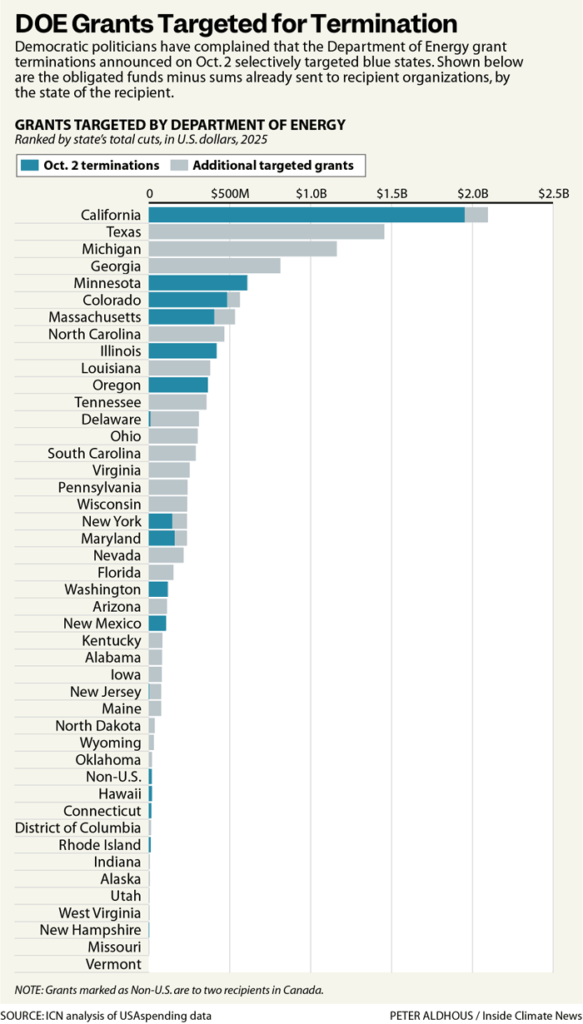
In some cases, the award amounts given in the leaked document assume planned future federal funding, spending that had not yet been obligated. For instance, the document notes an amount of $1.2 billion to establish a series of hydrogen production facilities along the Gulf Coast of Texas.
However, only around $22 million in funding had been awarded so far for planning, analysis and design activities. Some $1.2 million of this has already been sent to HyVelocity, the consortium behind the effort.
This project is one of seven hydrogen hubs appropriated $8 billion through the 2026 fiscal year under the Bipartisan Infrastructure Law, passed in 2021.
Some of the projects covered by the Oct. 2 announcement and among the additional list of targeted projects in the leaked document had already been terminated in May. They include a grant of more than $86 million to Sublime Systems of Somerville, Massachusetts, to create a low-carbon cement factory and a project to replace the use of natural gas with hydrogen at an ExxonMobil plant in Texas that had been awarded more than $330 million, most of which had not yet been sent.
Still, clean energy advocates warned that the administration’s latest moves would have widespread economic and environmental costs.
“There will be job losses in local communities. There will be less reliable electricity grids,” said Zealan Hoover, former senior advisor to the EPA administrator during the Biden administration.
“Federal dollars are designed to solve investment gaps where private capital does not flow,” Hoover said. “So my expectation is that if these grants are terminated, then that work will either not progress, it will progress significantly slower or other sources of public investment at the state and local level or social investment will need to be redirected—but then that comes at the cost of investment that’s not happening elsewhere.”
Because many of the grants aim to catalyze new technologies, cutting them also harms the country’s ability to keep pace with China and other nations, he added.
“So let’s be clear, this is a big step back for American competitiveness and clean energy, no matter which way you slice it,” Hoover said.
Conrad Schneider, U.S. senior director for the Clean Air Task Force, a nonprofit that promotes climate solutions and reducing air pollution, said he was most concerned about cuts to projects intended to develop new technologies and demonstrate their commercial viability. “With respect to some of these emerging technologies that require the demonstrations, that’s what we would say would be the hammer blow,” he said.
These projects include initial work for the hydrogen hubs championed by the Biden administration as “critical energy infrastructure” that would create jobs and spur investment in technology to power hard-to-decarbonize sectors like heavy industry and long-haul trucking. Two of those hubs, MACH2 and ARCH2, would be located in part in the crucial swing state of Pennsylvania.
The hubs have bipartisan support in the state. Democratic Gov. Josh Shapiro hailed them as a “win for the Commonwealth,” while Republican state Sen. Gene Yaw announced he was “delighted” by the investment when it was first announced and looked forward to “working cooperatively” with the federal government and businesses to realize the projects’ full potential. Just last week, MACH2’s chief operating officer, Manny Citron, told WHYY that Republican Sen. Dave McCormick’s staff had been “incredibly supportive” of the hub.
Andrew Cottone, founder of one of MACH2’s anchor partners, Aternium, said he had not been notified of any changes in the funding status of the hub. Either way, Aternium will move forward with its plans for building hydrogen production facilities in the mid-Atlantic region, he said.
“It’s full steam ahead for us,” he said. “We would love a strong ecosystem, but we’ve launched this company with a responsible business model. We are viable with or without tax credits. We are viable with or without the Department of Energy hub system.”
Others involved in the leadership of the MACH2 and ARCH2 hubs did not respond to requests for comment. It is unclear whether the projects can survive without federal government support.
Part of the problem is that potential agreements with steel and iron companies to use the fuel produced by the hubs did not end up moving forward, said Hilary Lewis, steel director at the nonprofit Industrious Labs, which works to decarbonize industry. The steel and iron industries contribute about 11 percent of global carbon emissions.
“We would have liked to see companies like U.S. Steel really invested in the hydrogen hub process,” she said.
The federal government has long played a key role in technological advances. Lewis said Biden-era tax credits, the hydrogen hubs and other federal investments in making green steel were all “great examples” of supporting clean energy solutions for industry.
“But when the government backtracks on its promises and cancels this type of funding, it puts American competitiveness at risk,” she said. “We are ceding leadership to other countries that are going to make these investments.”
Inside Climate News obtained a copy of the termination letter sent by the DOE to one of the grant recipients targeted in its initial announcement.
In the letter, dated Oct. 1, the agency said the recipient’s award was reviewed in a Portfolio Review Process (PRP) to ensure that the funding was “financially sound and economically viable, aligned with national and economic security interests, and consistent with Federal law and this Administration’s policies and priorities and program goals and priorities.”
“DOE regrets to inform you that the subject [grant] did not pass Standards of the PRP Committee review and will not proceed,” the letter reads.
Not all of the recipients have received notice that funding is being cut off. A spokesperson for the California Energy Commission on Thursday said that it still hadn’t received any communication from DOE that a $630 million grant for improvements to the state’s electric grid had been canceled, despite appearing in the Oct. 2 list of terminated awards.
Other recipients, including Mercedes-Benz—awarded some $285 million for next generation all-electric van production—and the University of North Dakota, which had four awards in the leaked list of wider potential cuts, declined or did not respond to requests for comment. Neither Mercedes-Benz nor UND’s awards were included in the DOE’s initial terminations.
“The Trump administration and its allies are actively restricting the supply of affordable clean power when demand is skyrocketing from data centers, industry and homes.”
— Joanna Slaney at the Environmental Defense Fund
To some groups impacted by the DOE’s moves, the decision to terminate funding capped off a long period of uncertainty stretching to President Donald Trump’s first day back in office.
“[For] a lot of members of our team, there was a certain amount of relief when this finally happened, because the fact that this has been going on since January has been a challenge,” said Zora Chung, cofounder of ReJoule.
Chung’s company had been slated to receive $10 million in federal funding to support its efforts to repurpose electric vehicle batteries for energy storage in commercial buildings. The project also sought to advance opportunities for historically underrepresented workers and businesses, and contribute to widespread adoption of long-duration energy storage in the U.S. by 2030, according to the award description.
To Chung, the DOE’s decision to terminate ReJoule’s award doesn’t reflect the project’s potential to advance the agency’s core mission. “We still believe that the project is aligned with the DOE goals of energy independence and resilience, as well as competing directly with China on battery technology,” Chung said.
Joanna Slaney, vice president for political and government affairs at the Environmental Defense Fund, agreed.
“Canceling projects that would lower electric bills and make the grid more reliable is not about achieving ‘energy dominance,’” Slaney said, referring to one of Trump’s key priorities. “The Trump administration and its allies are actively restricting the supply of affordable clean power when demand is skyrocketing from data centers, industry and homes.”
Despite the loss of federal funding, Chung said that ReJoule’s battery project would move forward—slowed and scaled back, but undeterred.
“While the cancellation is certainly a setback for this specific deployment timeline—and a missed opportunity for accelerating American job creation and domestic energy security—it does not change our mission,” Chung said in a LinkedIn post confirming the award’s cancellation.
The DOE’s move to terminate funds that had already been obligated is also likely to face challenges from recipients and clean energy advocates. Chung, in her LinkedIn post, said that ReJoule would be formally reviewing its options, including appeal—while the California Energy Commission said that it “will evaluate options to appeal or reverse federal actions to cut previously allocated funds to these important programs.”
This story is funded by readers like you.
Our nonprofit newsroom provides award-winning climate coverage free of charge and advertising. We rely on donations from readers like you to keep going. Please donate now to support our work.
Donate Now
In its Oct. 2 announcement, the DOE claimed that the terminated projects “did not adequately advance the nation’s energy needs, were not economically viable, and would not provide a positive return on investment of taxpayer dollars.”
But the administration’s moves come as solar and wind power, in particular, are establishing themselves as the most economically competitive options for energy investment. On Tuesday, a report from the energy think tank Ember announced that renewables had for the first time surpassed coal in the global electricity mix. Meanwhile, the Trump administration’s effort to lease rights to extract 167 million tons of coal on federal lands in Montana attracted just one bid, of $186,000.
According to the International Energy Agency, renewable energy capacity is poised to more than double globally in the next five years, even as projections for the United States are revised down based on the Trump administration’s policies. Renewables are growing in countries like China, India, Pakistan and Saudi Arabia; Germany recently announced a $7 billion investment in industrial decarbonization.
Michael Noble, a Minnesota-based consultant to clean energy companies and a longtime advocate for the energy transition, said that wind, solar, batteries and related technologies are “all kick-ass technologies that are falling in price. Those fundamentals cannot be undone by politicians.”
The administration’s favoring of fossil fuels “is putting all of our money on a horse that’s already lost,” said Sachu Constantine, executive director of Vote Solar, a nonprofit based in San Francisco.
Inside Climate News journalists Dan Gearino and Marianne Lavelle contributed reporting.
About This Story
Perhaps you noticed: This story, like all the news we publish, is free to read. That’s because Inside Climate News is a 501c3 nonprofit organization. We do not charge a subscription fee, lock our news behind a paywall, or clutter our website with ads. We make our news on climate and the environment freely available to you and anyone who wants it.
That’s not all. We also share our news for free with scores of other media organizations around the country. Many of them can’t afford to do environmental journalism of their own. We’ve built bureaus from coast to coast to report local stories, collaborate with local newsrooms and co-publish articles so that this vital work is shared as widely as possible.
Two of us launched ICN in 2007. Six years later we earned a Pulitzer Prize for National Reporting, and now we run the oldest and largest dedicated climate newsroom in the nation. We tell the story in all its complexity. We hold polluters accountable. We expose environmental injustice. We debunk misinformation. We scrutinize solutions and inspire action.
Donations from readers like you fund every aspect of what we do. If you don’t already, will you support our ongoing work, our reporting on the biggest crisis facing our planet, and help us reach even more readers in more places?
Please take a moment to make a tax-deductible donation. Every one of them makes a difference.
Thank you,



